Search
The greenway was designed by the internationally renowned landscape design company SWA Shanghai. It is not only a green and healthy slow-traffic system that travels through the city, but also a case of innovation and sustainability. The landscape architect designed three node bridges (suspension bridge, floating bridge, and exploration bridge) on the greenway. The suspension bridge, one of the three bridges implemented, is an alternative in the suspension bridge proposal proposed by sbp Shanghai. Because it perfectly matches the location of the bridge site, it merges with the surrounding mountain and forest environment and becomes the final implementation plan.
1. Overall composition
One end of the suspension bridge is connected to the main walkway of the bright green road, and a secondary walkway at the other end is connected after crossing the 30-meter deep valley. A suspension bridge with a total length of about 100m connects the main walkway and the green mountain. The overall design intent of the design team is to build a landscape pedestrian bridge with minimal impact on the overall natural environment and harmonious integration with nature.
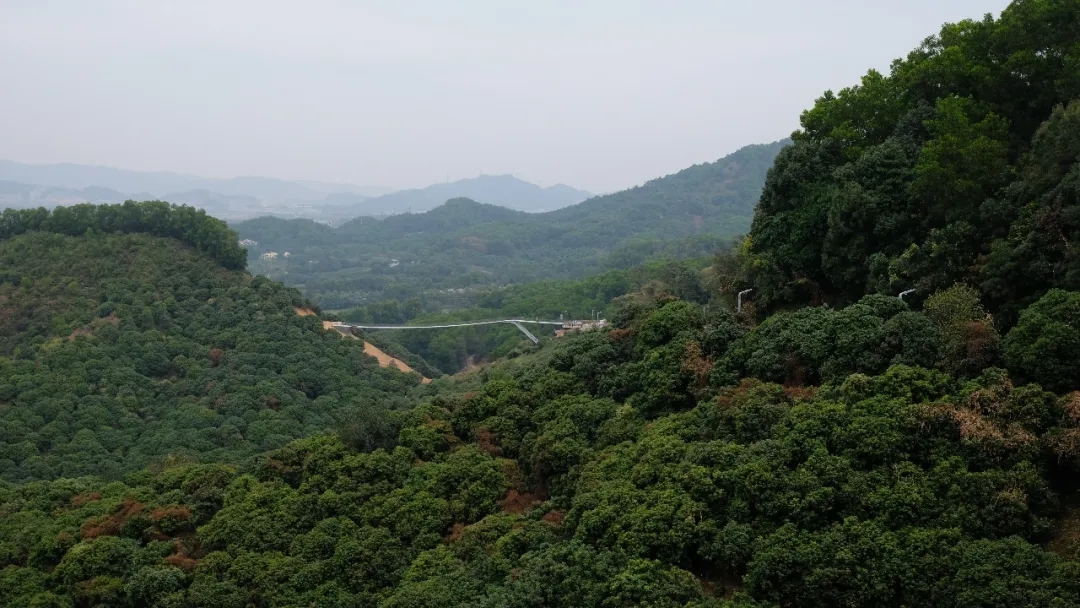
The bridge uses a two-span system with a main span of 65m and side spans of 25m. A slanted column is set on the side between the two spans near the main walkway. The purpose of setting the inclined column is: on the one hand, it effectively reduces the overall bridge span; on the other hand, it helps to better control the maximum longitudinal slope of the bridge deck. At the same time, a high point similar to the observation deck can be constructed, and standing here can provide a panoramic view of the beautiful valley scenery.
The two suspension belts are the most important structural bearing members of the suspension bridge. Here we use Q690 high-strength steel to reduce the size of the members. The steel plate belt transfers the internal forces generated by various loads to the abutments on both sides in the manner of longitudinal bridge axial tension. There is a special shear connection point between the steel plate strip and the inclined column to transfer the load. Above the steel plate strip is a precast concrete slab with a thickness of 120mm as a pedestrian walking deck. The railing is made of transparent stainless steel cable net and connected with the embedded parts in the precast concrete slab.
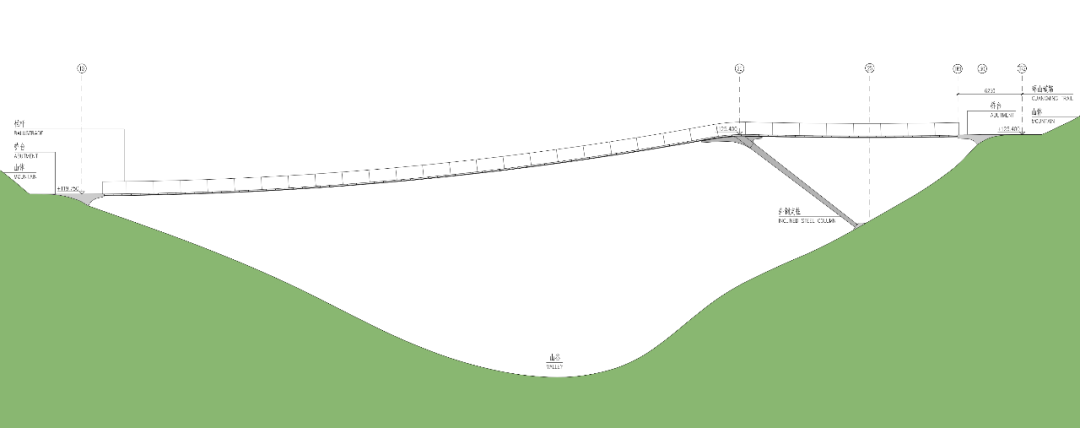
Bridge facade
2. Structural system
The two suspension straps in the bridge system transmit the axial tensile force to the abutments on both sides. Due to the compression of the inclined column, the tension of the mid-span sling is always less than that of the side span. The bridge abutments on both sides are set on the pile foundation bearing platform and anti-pull anchors are added, and the pile foundation and the anchor rods transmit the tensile force of the steel plate strip to the foundation holding layer. The connection beam hidden in the ground can offset the horizontal thrust generated in the inclined column, so only the vertical force is transmitted to the foundation at the foot of the inclined column.
The magnitude of the tensile force in the sling depends entirely on the selected sagittal height of the sagging arc. The greater the sagittal height, the smaller the tensile force. At the same time, the maximum longitudinal slope of the bridge deck is also determined by this height. Therefore, the designer needs to carefully study the geometric form of the vertical bridge to find the best balance between stress and walking comfort.
In addition to the main tension, a certain bending moment needs to be withstood in the sling. The magnitude of the bending moment in the sling depends on the radius of curvature of the sling and its cross-sectional thickness. The smaller the turning radius, the greater the bending moment, and the thicker the thickness, the greater the bending moment. In the middle of the main and side spans, the radius of curvature is almost infinite, so the bending moments generated are negligible. However, the radius of curvature at the reverse bend point of the catenary arc (at both sides of the abutment and at the high point of the inclined column) needs to be carefully studied, and through careful design, the stress level and overall geometry of the catenary zone Are at a balanced level.
At the beginning of the project, the geometric parameters were mainly determined by hand calculation based on empirical formulas. In the in-depth design process of the project, by establishing a three-dimensional finite element model, you can better understand the structural deformation and dynamic characteristics of the bridge. The deformation of the structure is of great significance to the design of the joints of such bridges, because the angle of the suspension tape caused by the overall deformation will define the structural size of the bearing at the turn.
Suspension bridge is a bridge system with weak stiffness and easy to be activated by dynamics, which is why this kind of bridge is mainly built in natural landscape. Because in the natural landscape, the tourists who step on the bridge are ready to meet this different experience. The dynamic response generated by the lower natural frequency of the suspension bridge can be controlled by adding additional mass to the suspension bridge.
Setting heavy precast concrete slabs on the bridge deck helps to optimize the dynamic characteristics of the bridge structure. Although this measure is taken, the natural frequency is still very low (or even lower), and the overall mass after weighting will be greater than the weight of the pedestrian, so that it is difficult for pedestrians to excite the violent dynamic response of the bridge through their own walking.
3. Wind tunnel experiment
The wind tunnel laboratory of Zhejiang University conducted a wind tunnel experiment on the bridge to better understand the structural response under different wind load conditions. For a bridge with such a low natural frequency, it is critical to eliminate the risk of wind instability caused by wind loads. The results of the model experiment in the wind tunnel stage show that when the wind speed is less than 50.8m / s, the bridge structure will not suffer wind instability, which is also attributed to the thin bridge deck to a certain extent.
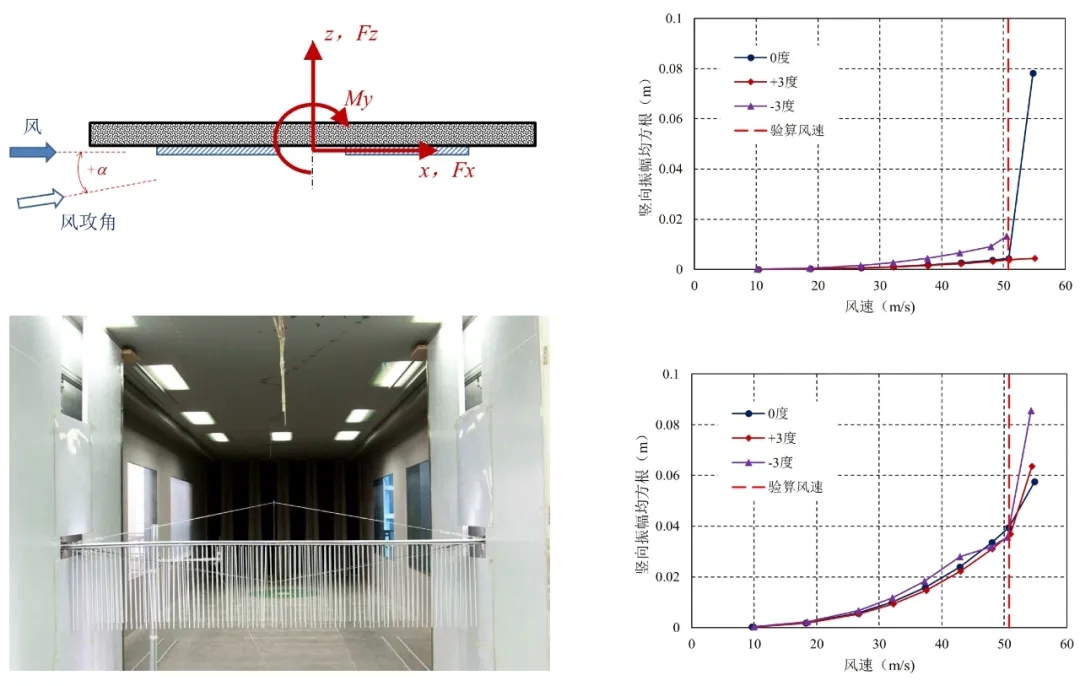
4. Construction
Since the access road on the greenway site is very limited, it is not possible to install suspension bridges with suitable heavy machinery. Therefore, the bridge structure, including the suspension belt, is made up of many parts and steel plates on site to facilitate the use of small vehicles for transportation. Temporary brackets were erected at the construction site to install steel strips and make them meet the set arc, then the steel strips were pretensioned by removing the temporary brackets, then precast concrete slabs were installed, and finally bridge auxiliary facilities, such as railings, Lamps, etc.
5. Sling material
The importance of the two slings of the bridge is self-evident. In order to keep them light, thin and simple, Q690D high-strength steel plate was selected as the steel for the sling. The cross-sectional size of each suspension tape is 750mm * 40mm, and the strip is divided into small sections and transported to the construction site, and welded together at the site. This is China's first large-scale welding of Q690D high-strength steel plates on site.
6. Summary
The suspension bridge in the green road of Guangming Township is the first suspension bridge in China that uses steel plates to bring stress. Despite the harsh transportation conditions of the project, the construction quality of the steel structure has reached a relatively satisfactory level. The bridge finally built floats lightly on the topography of the mountains and forests, reflecting the design team's high respect for the natural environment and resources.
The quality and innovation of the bridge benefit the landscape architect's good perception and cognition of the construction in the natural environment; and after careful deliberation and research, the current bridge location and connection method are finally selected. In addition, it also benefits from the owners' strong willingness to build such high-tech bridges, as well as the efforts of the general contractor and local design consultants.
Bridge related information:
Bridge width: 2.6 meters
Bridge length: 102.8 meters
Span; 25 meters (side span) + 65 meters (main span)
Structural form: suspension bridge
Landscape design: SWA Group
Bridge design: sbp Schleich Engineering Design Consulting Co., Ltd.
Construction unit: Shenzhen Guangming District Construction Engineering Department
EPC project general contract: China Construction Third Engineering Group Co., Ltd. All photos copyright below
© schlaich bergermann partner / David Sommer
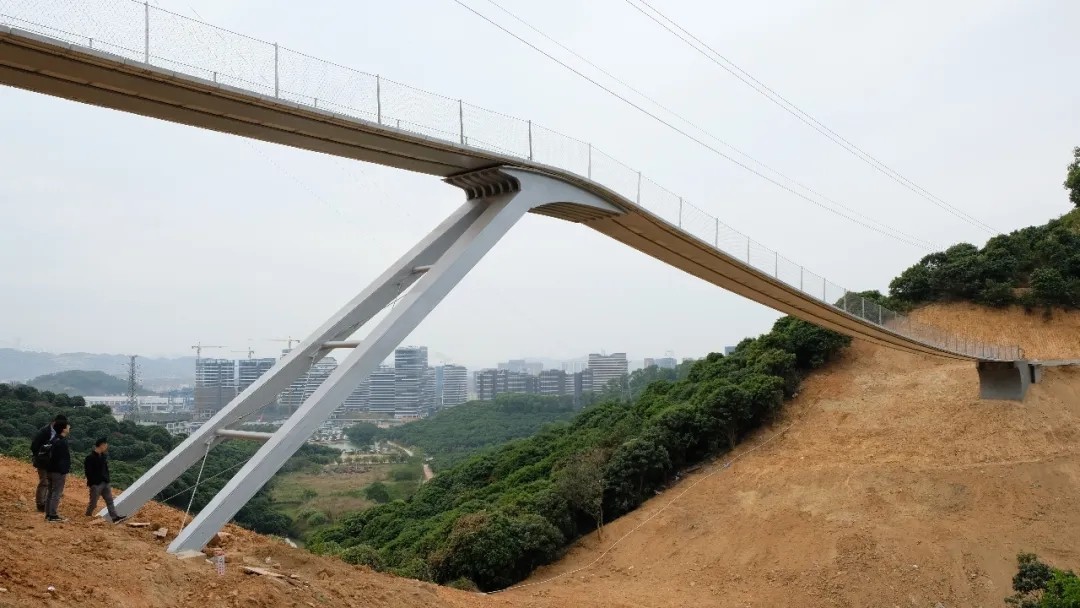
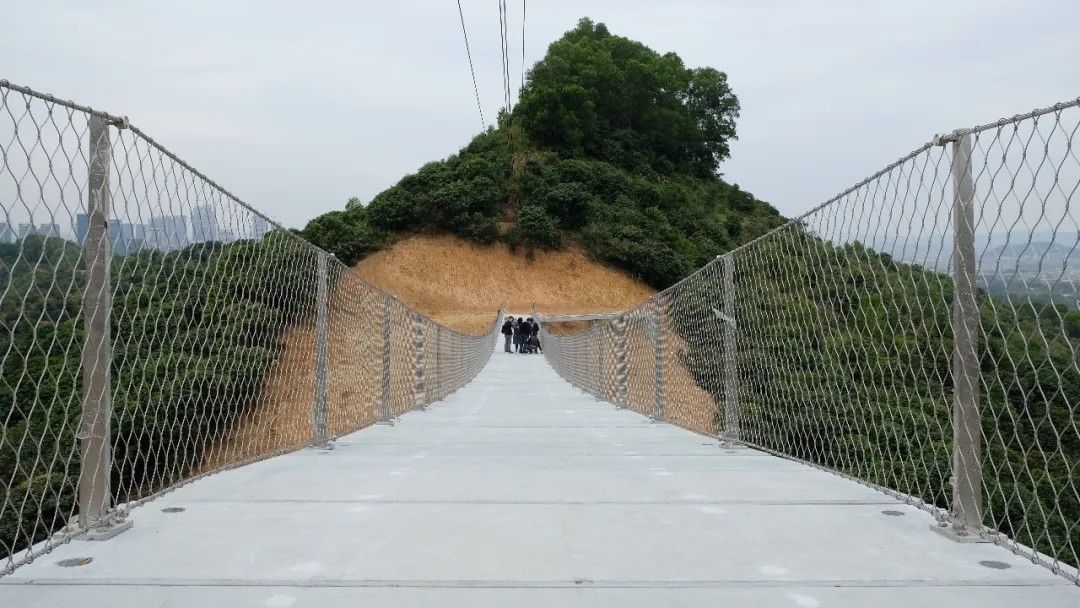
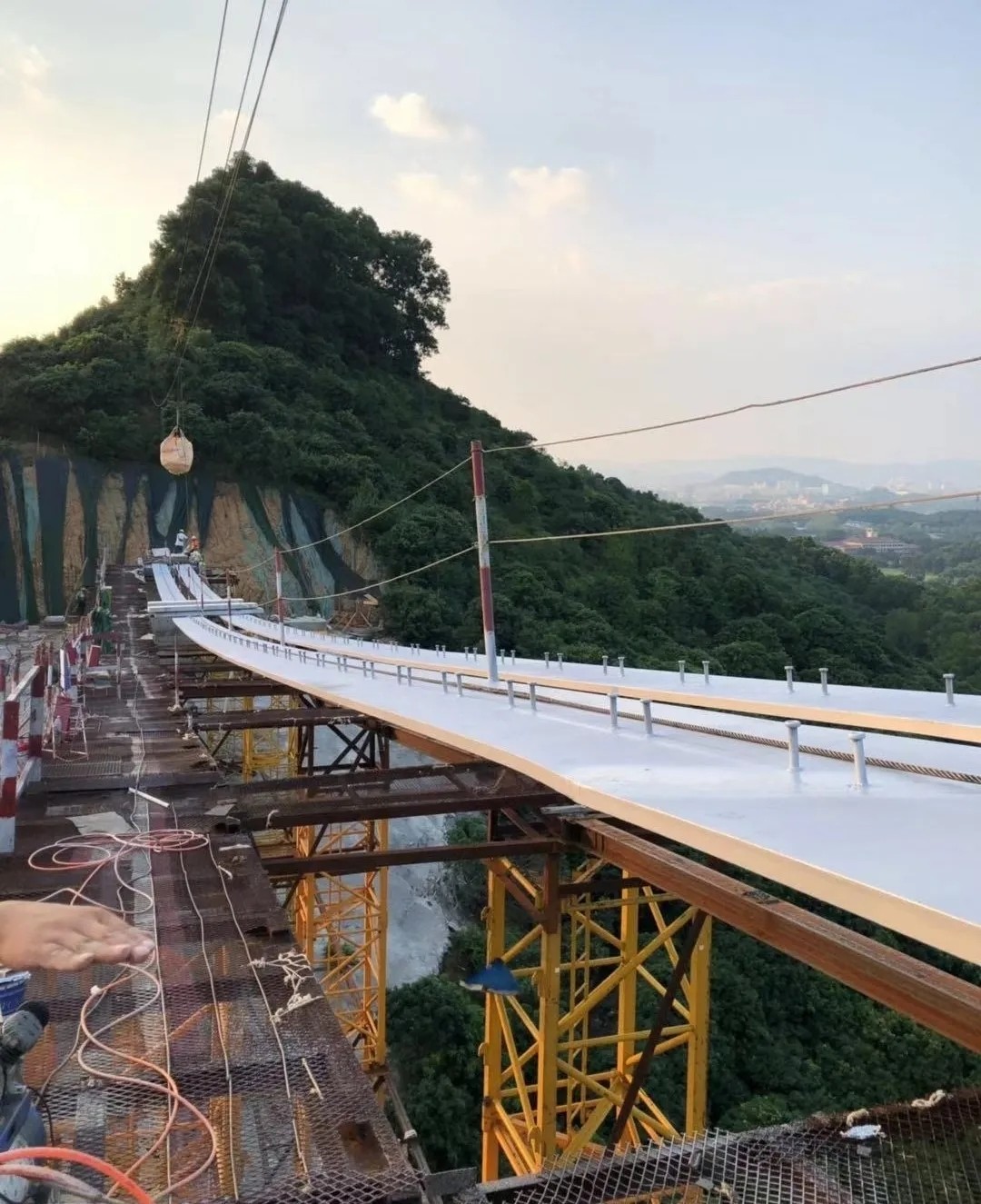
This article is reproduced from: sbp Schleich Engineering Design Consulting
Copyright © Zhejiang Wanhao Group Co., Ltd. All Rights Reserved.
Sitemap | Technical Support 